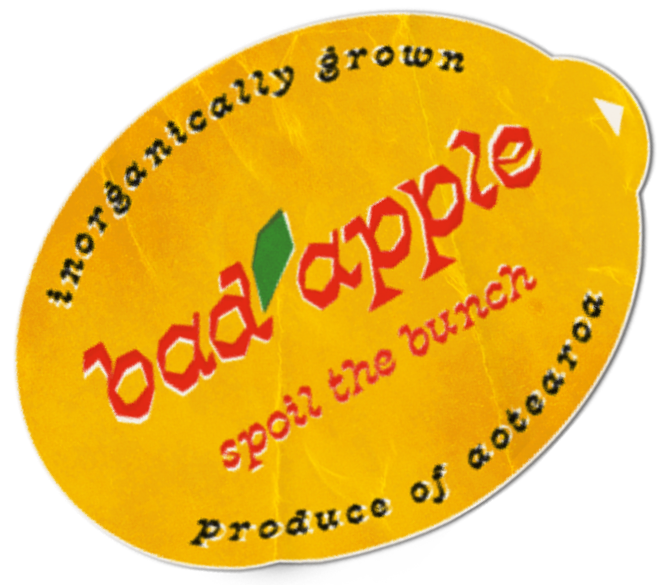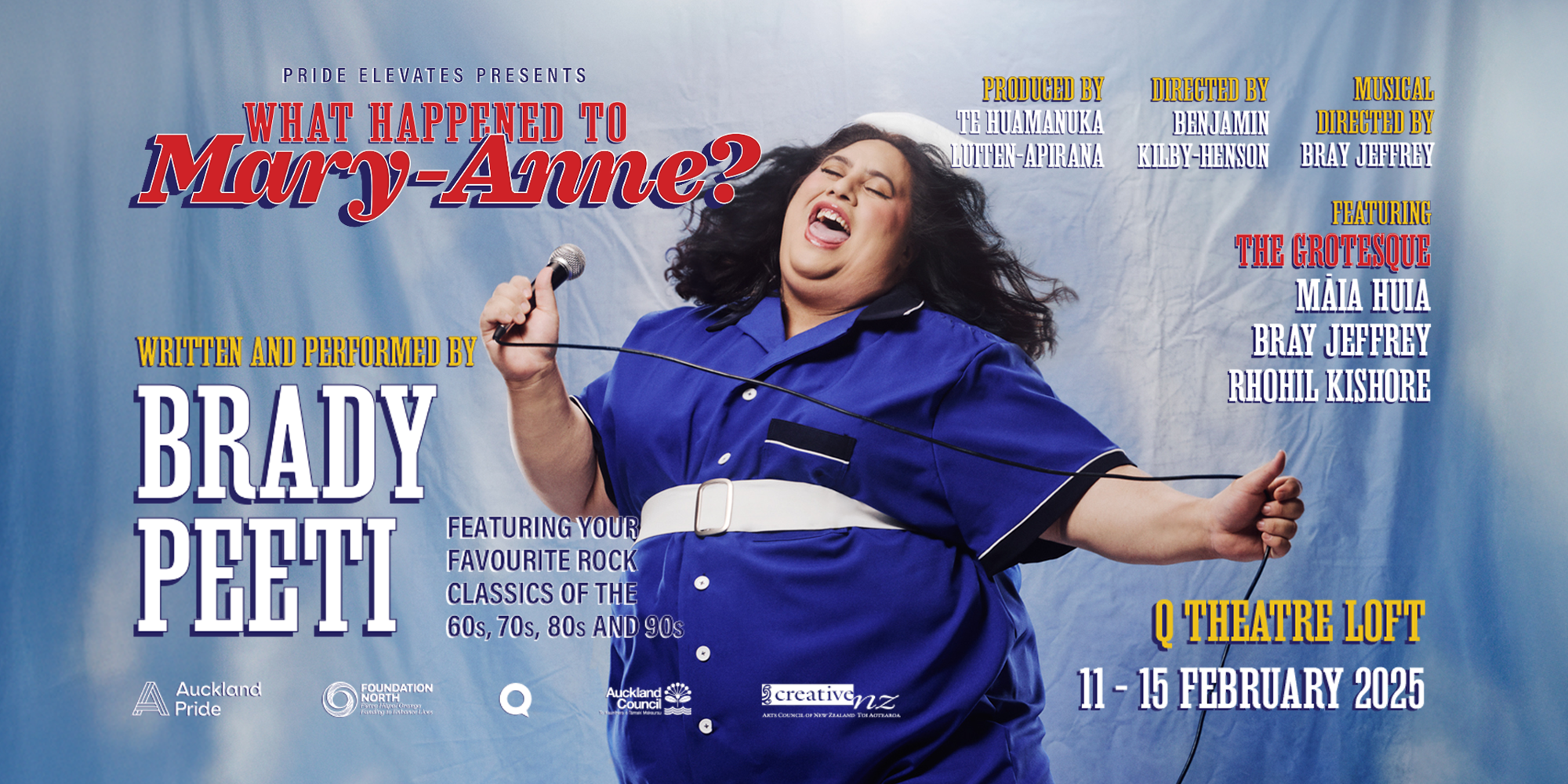I got high before seeing this show. I get high before seeing most theatre shows nowadays—something that happens when you’re an industry dropout. My senses are already heightened at any theatre, completely aware of all my exits; completely afraid of making small talk with acquaintances and exes. The high makes me less present, maybe, but it keeps me safer.
That didn’t really matter when I saw What Happened to Mary-Anne?—you can’t be anything but completely present when Brady Peeti is in front of you, pouring her heart out in song and script. The show is an ode to rock music, brown womanhood and fantasy, told through the eyes of Mary-Anne, created and written by Peeti.
Rock music lends itself so well to wāhine Māori, in a kaikaranga-of-my-dreams way. Feminine rage is something that is so sexy to me, and of course, brown wāhine feel it deeper than most. Watching a powerhouse like Peeti embrace the darker themes of the music, indulge the anger and effortlessly command the space is beyond satisfying. I wish we were all more forthcoming with our anger. The idea of breaking glass / breaking form / breaking the fourth wall / breaking into song in a state of Extreme Emotion is. . . so tantalising. I think we all want to be heard; to name our pain, to give it form and function and a catchy hook. The audience’s desperation to join Peeti in song is so charming and sickeningly sincere.
There’s something so sacred, still, about seeing trans people onstage. It never gets old, or less special, or less of an honour. Even more so when transphobia isn’t the focus of the story. And thank goodness!!!! There’s too much grief to handle right now, in a world built so violently against our trans whānau—a world not even worth mentioning when Brady’s exists. I’d much rather live there, with the fulfillers of fantasy.
But the baseline of every story is grief, that immovable thing that moves us all in different ways. We all know this. Once you experience a deep grief, you see its shadow in everything, in all art you consume. I don’t care if there were sound and mixing issues, actually. I think this is what theatre is for—a catharsis, a commune, a stage soaked in red and a landing place for grief.
Grief makes way for gratitude, and gratitude preludes joy. Mary-Anne tells us that there is joy to be found. I sit back and I believe her.



